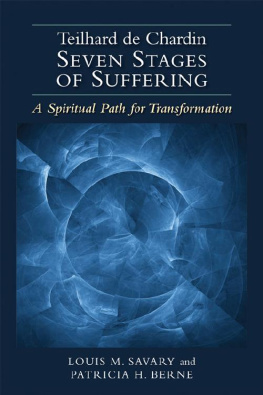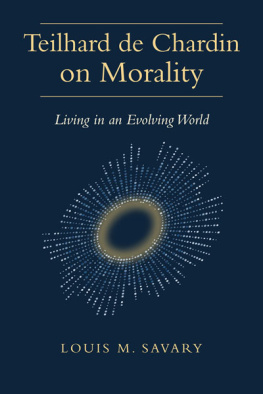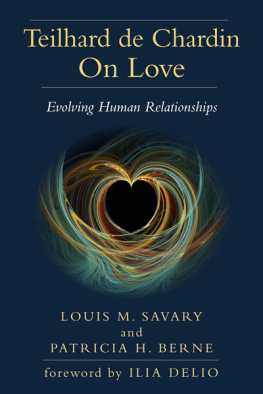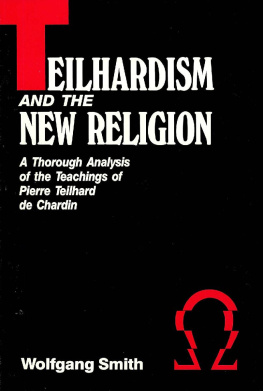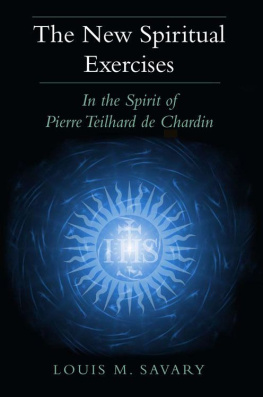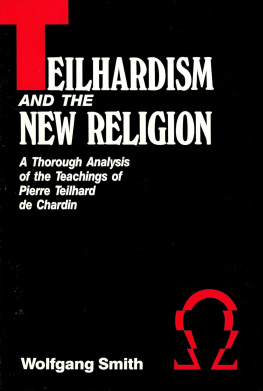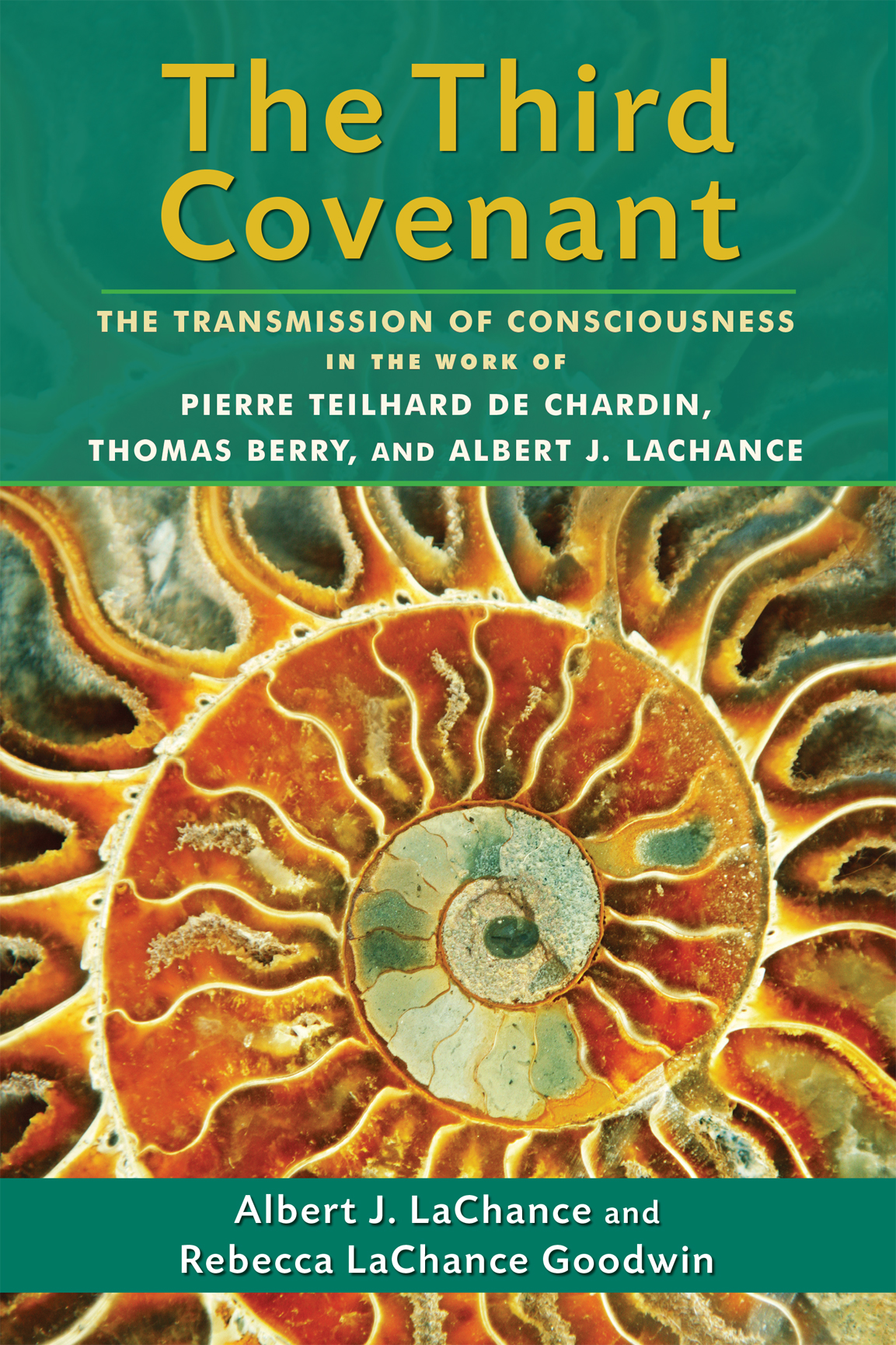Also by Albert J. LaChance
The Architecture of the Soul: A Unitive Model of the Human Person
Cultural Addiction: The Greenspirit Guide to Recovery
The Modern Christian Mystic: Finding the Unitive Presence of God
The Way of Christ: The Gospel of John through the Unitive Lens
Copyright 2014 by Albert J. LaChance and Rebecca LaChance Goodwin. All rights reserved. No portion of this book, except for brief review, may be reproduced, stored in a retrieval system, or transmitted in any form or by any meanselectronic, mechanical, photocopying, recording, or otherwisewithout the written permission of the publisher. For information contact North Atlantic Books.
Published by
North Atlantic Books
P.O. Box 12327
Berkeley, California 94712
Cover photo iStockphoto.com/hidesy
Cover and book design by Susan Quasha
The Third Covenant is sponsored by the Society for the Study of Native Arts and Sciences, a nonprofit educational corporation whose goals are to develop an educational and cross-cultural perspective linking various scientific, social, and artistic fields; to nurture a holistic view of arts, sciences, humanities, and healing; and to publish and distribute literature on the relationship of mind, body, and nature.
North Atlantic Bookss publications are available through most bookstores. For further information, visit our website at www.northatlanticbooks.com or call 800-733-3000.
The Library of Congress has cataloged the printed edition as follows:
LaChance, Albert J.
The third covenant : the transmission of consciousness in the work of Pierre Teilhard de Chardin, Thomas Berry, and Albert J. LaChance / Albert J. LaChance, Rebecca LaChance Goodwin.
pages cm
Summary: Offering an inspired vision of the future of humanity, The Third Covenant explores the work of three seminal thinkers Provided by publisher.
eBook ISBN: 978-1-58394-740-1
ISBN: 978-1-58394-739-5
1. ChristianityPhilosophy. 2. Philosophy, Christian. 3. Religion. 4. Teilhard de Chardin, Pierre. 5. Berry, Thomas, 1914-2009. 6. LaChance, Albert J. I. LaChance Goodwin, Rebecca, 1981- II. Title.
BR100.L235 2014
230dc23
v3.1
This book is dedicated to
Fr. Pierre Teilhard de Chardin
and Fr. Thomas Berry, two Western masters
And to my grandson, Tommy,
named after my teacher Pa loves you
Acknowledgments
Albert LaChance would like to acknowledge his wife Carol and his two daughters, Rebecca and Kateri, for their ongoing love and support of his writing. He especially thanks Rebecca for her role as his colleague in this work and for her contributions to producing this book. To Richard Grossinger and Lindy Hough for their unyielding support for this kind of work.
Rebecca Goodwin would like to thank her husband Chuck and their two boys, Jonah and Tommy, for their patience and support during the writing of this book. A huge thank you to every warm soul at All Saints Church for making the Episcopal Church a new home for worship after many years of searching.
Contents
P ART I
E MERGENCE OF THE A VATAR V OICE : T HE U NITIVE V ISION OF P IERRE T EILHARD DE C HARDIN
P ART II
A MPLIFYING THE A VATAR V OICE : T HE W ORK OF T HOMAS B ERRY
P ART III
A WAKENING TO THE A VATAR V OICE : T HE W ORK OF A LBERT J. L A C HANCE
The Back-Story
I NTRODUCTION BY A LBERT J. L A C HANCE
I t was the spring semester of 1971. I still needed a few general education credits to graduate from the University of New Hampshire. The philosophy department offered a course entitled The Philosophy of Religion. Having suffered bodily, emotional, and spiritual abuses perpetrated upon my person in Catholic schools, I had little interest in religion, or so I thought. I had recently, however, been reading the Tao Te Ching , the John Wu and K. T. Sih version published at that time by St. Johns University Press. I had also studied the iconography of what I have named the Phenomenon of the Sacred as an art history major. The philosophy course offered an introduction to the basics of the religions of China, India, and the Middle East, as well as the Indigenous peoples. I signed up and, to my great surprise, my life was changed forever.
The sixties were behind us now. Kent State, Woodstock, and the murders of Robert F. Kennedy, Martin Luther King, Jr., John F. Kennedy, Medgar Evers, and so many more were now part of American historys hall of shame. The so-called youth movement or hippie movement seemed to me a drugged fraud, a narcissistic entrancement. I always preferred the grinding intensity of the Rolling Stones to the sweet melodies of Paul McCartney or the transparent narcissism of John Lennon. Drugs had claimed the lives of Janis Joplin, Jimi Hendrix, and Jim Morrison. Charlie Manson had revealed the interior pathology of it all, as did the Rolling Stones concert at Altamont. The quasi-religious sense of the sixties had evaporated. The prophetic Gospel values revealed by Martin Luther King, Jr., and the Catholic Kennedys, the true Gita values of Maharishi Mahesh Yogi, all lost their hold on the movement and, seemingly, only the drug abuse remained. By 1971, I was more interested in Frank Zappa and his comical critique of the pretenses of both straight as well as hip culture. I took the philosophy course, graduated, and made the necessary pilgrimage to California. Not much later, I returned to New Hampshirebut to do what?
In other contexts, I have coined terms for diagnoses not included in any version of the Diagnostic and Statistical Manual , the DSM . One such diagnosis is SIDD or self-induced delusional disorder. The diagnosis describes the whole spectrum of substance use, ranging from what we call social drinking and/or recreational drugging all the way through to the terminal horror of overdose, brain damage, and death, along with all the insanities and dysfunctions of addiction. What was left to us in 1971 was a cultural epidemic of drugs and alcohol, stripped of whatever shreds of spiritual or moral principles originally inherent in them as a movement since the 1960 elections. Presently, with the introduction of opioids into the mix, a great many young people will be dead prior to their thirtieth birthday. I once heard an anecdote or bad joke that went something like this: A recovering alcoholic stood before the casket of his friend who never found a sobriety program. The man said to the dead mans widow, Its too bad he never found the program of AA. The mans widow responded, Oh, he wasnt that bad! The man was dead! Why do we use alcohol and other drugs of whatever description? Why are we so determined to continue our habits up to and including such denial, even with someone in a casket? We do so, it seems, because humans love to enter into a euphoric and delusional world after which they can return to reality. Our problem now is that the nation itself seems to be suffering from a collective, delusional, bipolar disorder and does not appear to be returning to reality any time soon.



